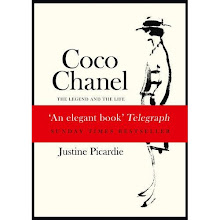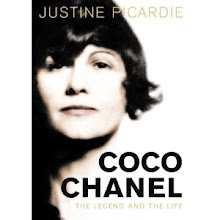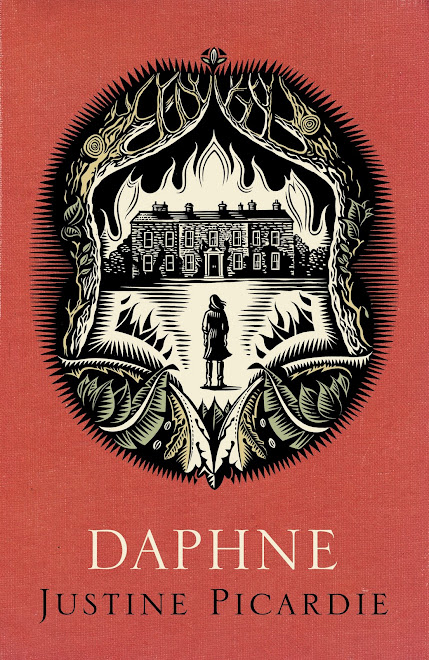 I wrote a piece for the Sunday Telegraph about this exhibition at the Women's Library -- and I really do recommend a visit, because it's a fascinating show -- and I wanted to post a link to the piece on the Telegraph website, but for some reason, I can't, so I'm going to put the entire article here. Sorry, it's a bit long for a blog, but eagle-eyed readers (of this blog and 'Daphne') will notice a reference in it to Clement Shorter, one of Mr Symington's colleagues in the Bronte Society. Imagine my surprise when I discovered his discoveries of Bronte manuscripts, as recorded in the archives of the Women's Library... Truth is stranger than fiction (etc); though I'd need to write another novel to uncover the rest of this story. Still, as you'll see, there are a few more clues here about the activities of Mr Shorter et al.
I wrote a piece for the Sunday Telegraph about this exhibition at the Women's Library -- and I really do recommend a visit, because it's a fascinating show -- and I wanted to post a link to the piece on the Telegraph website, but for some reason, I can't, so I'm going to put the entire article here. Sorry, it's a bit long for a blog, but eagle-eyed readers (of this blog and 'Daphne') will notice a reference in it to Clement Shorter, one of Mr Symington's colleagues in the Bronte Society. Imagine my surprise when I discovered his discoveries of Bronte manuscripts, as recorded in the archives of the Women's Library... Truth is stranger than fiction (etc); though I'd need to write another novel to uncover the rest of this story. Still, as you'll see, there are a few more clues here about the activities of Mr Shorter et al.Once upon a time, when I was a student at Cambridge in the early Eighties, I knew that my enjoyment of women’s magazines was a guilty secret, and that my stash should be kept hidden under the bed in case someone saw me looking at them. I’d grown up reading my mother’s copies of Vogue and Nova, and they played a part in the shaping of my ambition to write, despite the unwritten law that suggested their irrelevance. This was an era when everyone seemed to disapprove of women’s magazines: feminists declared that they oppressed the sisterhood, academics said they addled the brain, and the Right united with the Left in the firm belief that they were irrelevant to political discourse.
A quarter of a century later, I still occasionally find myself having to defend them against intellectual sneering, but the disapproval is less widespread; and a growing acceptance of their place in cultural history is evident in the mounting of a new exhibition devoted to their evolution from the 18th century to the present day, drawing on an archive of magazines at the Women’s Library in the East End of London. The collection is a treasure trove, as I discovered on a visit there last month; for the further I delved into its depths, the more was yielded up of the extraordinarily varied ways in which magazines have both reflected and defined the lives of their readership over the last three hundred years. True, there an abundance of ephemera – though that itself is intriguing; what looks like a rag-bag of custard recipes, health tips and soap advertisements turns out, upon closer inspection, to contain little gems and nuggets of information about the world inhabited by previous generations. In other words, beware of judging a magazine by its cover, because what might be dismissed as trivia could open hidden histories. “These magazines matter,” says Gail Cameron, curator of The Women’s Library, “because they were, and are, bought by hundreds and thousands of women, so that they’re an incredibly important source of information about women, as well as having been a source of information for their readers at the time.”
The past is a murky place, and some of this information will seem bizarre to modern readers; but then women’s magazines have often offered curious advice, or edged into disconcerting territory. If a woman’s magazine is a friend to its reader – and the best ones are – then it is also the case that those friendships will go through difficult patches, when each is irritated or confounded by the other. I have worked for several different magazines, and been involved in the launches of three new titles; but I still find myself becoming exasperated, at times, as a reader of magazines that I feel deep attachment to, particularly when they make me feel bad about myself or if they take on a supercilious tone. (Too chubby or impoverished for the new designer collections? Ho hum, get on your bike…)
Not that there is anything new in admonitory editorials; a chorus of tut-tutting arises from the pages in the archive of the Women’s Library. Take, for example, this declaration of intent from the Servants Magazine, published in 1849: “We neither scold, nor discourage; and if at any time we deem it necessary to point out a fault, we try to consider ourselves as occupying the place of an orderly, but kind, mistress, who whilst she will have everything about the house done properly, yet, if she observe any neglect, tells her servants of it, in such a judicious manner, as to secure both the attention and affection of those whom she has taught to look up to her as their friend and counsellor.” There are moments when a despotic fashion or beauty editor’s instructions in a 21st century glossy magazine can seem equally bossy; though at least we no longer have to put up with sartorial advice from Reverend H. Melvill, whose advice to readers, under the headline PASSION FOR DRESS, was as follows: “The beautiful attire is that which comes out of the loom of modesty; and all other, by whomsoever worn, is raiment ‘spotted by the flesh,’ and therefore perilous to the wearers.”
Nothing, however, could be more perilous to the flesh than the accessories advertised in the Ladies Diary in 1728, which included artificial teeth (‘they are not to be taken out at Night, but may be worn Years Together’) and other, more mysterious contraptions: ‘Steel Spring and other sorts of Trusses for Ruptures at the Navel or elsewhere.’ Nevertheless, the editorial content of the Ladies Diary – also known as the Woman’s Almanack – offers a satisfying refutation of the theory that magazines for female readers have always been filled with mind-numbing rot. This sprightly 18th century ancestor announced itself as ‘Containing many Delightful and Entertaining Particulars, Peculiarly Adapted for the Use and Diversion of the Fair Sex’; and the mathematical puzzles and poetical enigmas (a trickier variation of modern crosswords) suggest that its readership enjoyed a challenge; and its correspondents were equally clever. One of the issues preserved at the Women’s Library contains a letter to the editor in Latin; another a series of enigmas composed in verse by Mrs Utrecia Smith. (Question: “I, who was born to neither House or Land/ Have now heaps of Wealth at my Command/ And yet to gain this Power I nothing do/ But all to others Active Hands I owe…” Answer: A Dice Box.)
There are many more pleasurably idiosyncratic periodicals to be discovered within the archive; I was particularly taken with Home Notes, edited by the semi-anonymous ‘Isobel’, a hugely popular weekly women’s magazine launched during the boom-years of the genre in the 1890s. Its alphabetical index for a bumper issue in 1898 spanned a mind-boggling range of articles: from A for Alaska, Marriage Customs in; Antoinette Broderie, Design For; Armless People, What They Can Do; to Z for Zurich Cats, Citizens Proposing Tax On. It turns out that the talented armless people featured in Home Notes included the redoubtable Miss Sarah Biffin, a gifted artist ‘only thirty-seven inches high’ who painted miniatures exhibited at the Royal Academy; possibly a more interesting subject than the celebrities whose bodies are examined and found wanting in the current crop of gossip magazines. The same issue also contained a fashion report from Paris – ‘What Is Being Worn in the Gay City’ – which seems uncannily familiar to what we might read over a century later: the magazine recommended ‘simplicity combined with smartness’, in the form of a dark grey dress trimmed with scarlet cloth and black braid. I also like the notion of The Fairy Belt, ‘a unique invention which changes the form of the waist, making it look two to three inches smaller’, that appears to have been a Victorian precursor of Magic Knickers.
There are other overlaps between the past and present: recipes, beauty tips, health advice, agony aunts. The latter appear to have adopted a bracing tone from the start: in 1805, the ‘Old Woman’ who responded to readers’ letters by citing the wisdom of her age and experience, was a no-nonsense character: “If a miss scarcely entered her teens asks my advice respecting a lover… I surely cannot show myself more their friend than by conveying to oblivion their folly…” The 20th century doyenne of agony aunts, Evelyn Home, who took on the job at Woman in 1937, was equally firm with her readers. In answer to a letter which ended, ‘So he left me, and I knew my heart was broken and I should never be happy again,’ she observed, briskly, ‘This is an example of self-dramatization, of making melodrama of a boy-friend’s preferring another girl. People who have suffered far more know that it takes a great deal for hearts to break – it takes enormous self-pity, self-interest and usually a narrow mind to achieve despair.”
Of course, some advice varied according to the era: at the end of the nineteenth century, when a fuller figure was more fashionable, Home Notes gave its readers guidance on how to put on weight: “Use plenty of butter and bread… Laugh over everything, worry over nothing; the less exercise taken, the better. Eat no acid fruits, but heaps of black grapes.” By 1967, the effervescent Honey magazine – motto, Young, Gay and Get-Ahead – was outlining a fast-track diet to lose weight: an orange for breakfast, a lean grilled steak and one tomato for lunch, another grilled steak with two tablespoons of cauliflower for supper, and no more than a couple of cups of tea a day to quench the thirst.
By this point, Honey was up against younger competitors like Nova, which had launched in 1965; though its retaliation to the new girl on the block was a startling cover line -- ‘This Is I Hate Honey Month’ -- beside a picture of a snarling model ripping up its pages. Inside, however, the contents were slightly less radical: having invited its readers to send in their criticism, the magazine came up with familiar answers. ‘I hate Honey for telling us one month that short hair is in,” complained one correspondent, ‘then the next month showing us lots of lovely snoods which need long hair to go in them.’ Honey’s solution? ‘Buy a hairpiece for 5s. 11d.” Meanwhile, Nova was declaring itself to be A NEW MAGAZINE FOR A NEW KIND OF WOMAN, but was nevertheless edited by a man, and its first issue veered towards male writers (Sir Julian Huxley, Robert Robinson, Christopher Booker, amongst others), though it did contain a delicious recipe for syllabub by Elizabeth David.
All of which makes it impossible to claim that women’s magazines have represented emancipation and liberation; but it would be churlish not to recognise the freedom with which they have ranged beyond their remit. As it happens, my favourite discovery in the archive was an article by a male author in an 1898 issue of The Woman at Home, a hugely successful periodical founded by a man, William Robertson Nicoll, though he remained invisible, while ‘Annie Swan’, a pseudonym for the successful novelist, Mrs Burnett Smith, presided over each issue with her editorials and advice columns. The journalist was Clement Shorter, an avid collector of Bronte manuscripts and close friend of Nicoll’s; presumably this explains why it was in The Woman at Home, rather than an academic journal or national newspaper, that Shorter chose to reveal his discovery of two poems by Charlotte Bronte, written immediately after the deaths of her sisters Emily and Anne. The magazine also printed the first facsimiles of the handwritten originals of these and other Bronte poems, and when by chance I came across them in the archive of the Women’s Library, it was with the astonished thrill of knowing that they would be important clues to literary detectives and academics attempting to solve the puzzle of missing Bronte manuscripts.
If there is a moral in this – and women’s magazines tend to search for morals, as well as meaning, in the chaos of ordinary life – it is that one should beware of dismissing these magazines as being meaningless. What seems to be irrelevant might just turn out to be important; and even if it isn’t, why feel compelled to hide your favourite magazine under the bed?







6 comments:
At the university I go to, I have to stop short of hiding magazines under my bed because they are seen as not intellectual enough.
The funny thing is, if I am caught with one, or in the past when I was caught with one, the guys or the ex would read the magazines from cover to cover... which is something to ponder on methinks.
Time to be out and proud, I reckon! Just leave them scattered around in full view, and the men will flock to them...
I've never been shy of showing that I read Women's magazines, but I'd never really thought them anything more than a bit of light relief - something to read when you've grown too tired for the book you've been reading.
Plot elements of 'Daphne' seem to follow you about, Justine, which must mean it's an extraordinarily powerful book.
I'll have to check out the exhibition when I'm in London next.
I like the idea of a plot following an author around. It sounds like a good idea for a novel...
Feel free to use it! I have an ever increasing feeling that I won't be published in my lifetime!!!
I think the standard of writing in magazines such as British Vogue is higher than in the US or Australian Vogue. I admit to being a bit of a magazine addict. I have huge piles of interior design ones. Not too fond of the celebrity gossip but I (bit of a whisper) do like a Hello! every now and again. It's like comfort food to me. Oh dear, hope my guilty secret is safe here.
Post a Comment